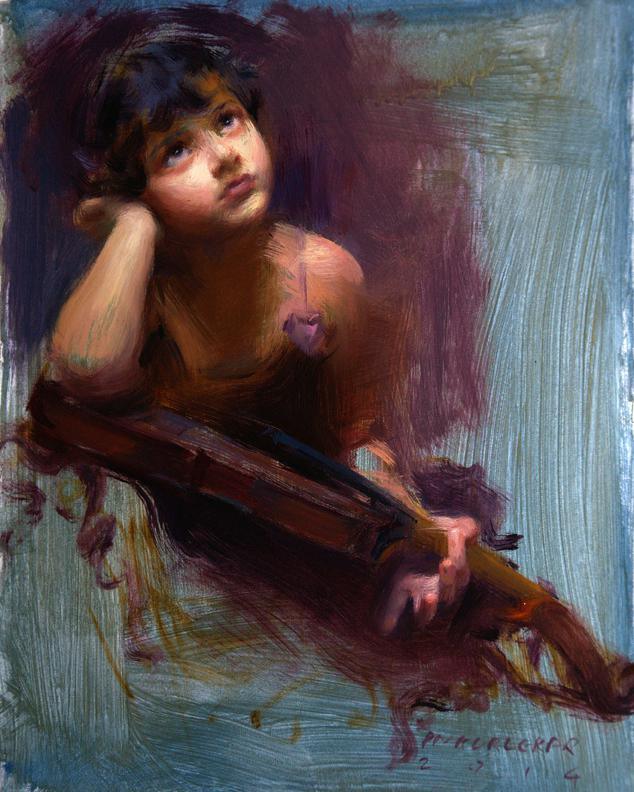Unveiling the Secrets Behind Expressive Figurative Oil Painting Styles
Unveiling the Secrets Behind Expressive Figurative Oil Painting Styles
Blog Article
Understanding the Art of Metaphorical Oil Paint: Necessary Tips and Techniques for Aspiring Artists
Figurative oil paint represents a complex intersection of method and interpretation, demanding a comprehensive understanding of human anatomy, structure, and shade theory. An exploration of shade harmony and structure strategies can considerably boost the visual effect of their job.

Understanding Human Anatomy
Comprehending human composition is essential for any kind of musician aspiring to master figurative oil painting. An extensive understanding of the human kind enables artists to produce natural depictions that reverberate with viewers. Understanding of physiological frameworks, such as joints, bones, and muscular tissues, supplies essential insight into how the body moves and positions.
Artists ought to familiarize themselves with the percentages of the human number, consisting of the partnership in between different body parts and how these proportions vary across genders and ages. This recognition permits for exact scaling and point of view in their job. Furthermore, recognizing the underlying musculature boosts the capacity to illustrate motion and tension in a figure, resulting in a much more compelling and dynamic make-up.
Researching anatomy likewise aids in identifying refined subtleties in pose and expression, which are vital for communicating emotion and narrative within a paint. Resources such as physiological books, life illustration sessions, and on-line tutorials can be vital devices for artists looking for to grow their anatomical knowledge. Ultimately, grasping human composition not just enhances technological skill but likewise enriches a musician's creative vision, allowing them to bring their figurative oil paints to life with credibility and depth.
Importance of Structure

Key principles of structure consist of equilibrium, unity, and centerpieces. Achieving balance makes sure that no solitary aspect bewilders the others, while unity develops a feeling of consistency throughout the item. Prime focus attract focus to substantial facets of the art work, permitting visitors to involve with the story or style a lot more deeply.
In addition, using leading lines and the regulation of thirds can significantly enhance composition. Leading lines naturally guide the customer's gaze through the painting, while the regulation of thirds offers a framework for placing crucial elements in an aesthetically enticing way. By grasping composition, aiming musicians can raise their figurative oil paintings, changing them right into compelling visual tales that reverberate with their audience.
Mastering Shade Concept
Color theory offers as a basic element of figurative oil painting that complements the concepts of make-up. Understanding the color wheel, which includes primary, secondary, and tertiary shades, is crucial for producing harmonious schemes and reliable visual narratives.
Trick ideas such as shade, saturation, and value play an important role in determining the mood and influence of a painting. Musicians ought to explore warm and awesome shades to evoke details emotions; cozy colors commonly convey power and interest, while amazing shades can impart peace and tranquility.
The connection between corresponding shades-- those opposite each useful reference various other on the shade wheel-- can produce striking contrasts and vibrant compositions. When compared, these shades enhance each various other's vibrancy, drawing the customer's eye and adding depth to the art work.
Furthermore, recognizing comparable shades allows artists to achieve a feeling of unity and comprehensibility. By choosing shades that are nearby on the wheel, one can preserve a well balanced atmosphere throughout the piece.
Eventually, understanding color theory gears up striving musicians with the devices necessary to control color purposefully, enhancing their ability to convey emotion and narrative with metaphorical oil paint. figurative oil painting.
Strategies for Texture
A variety of techniques can successfully develop appearance in metaphorical oil paint, including deepness and measurement to the art work. One fundamental method is making use of impasto, where thick layers of paint are related that site to the canvas, permitting for a three-dimensional quality. This technique improves light interaction, producing vibrant aesthetic passion.
Another method is scumbling, which involves applying a slim layer of lighter paint over a dried out darker layer. This strategy permits the underlying color to show via, causing a soft, textured effect that can evoke a feeling of atmosphere or age. Dry brushing is also important; using a dry brush with marginal paint, musicians can develop great lines and delicate textures, ideal for capturing the subtleties of skin or textile.
In addition, combination knives can be utilized to use or scuff paint, producing distinct patterns and textures. Trying out various tools and materials, such as sponges or dustcloths, can additionally enhance the textural quality of a paint. Eventually, mastering these techniques calls for method and experimentation, allowing musicians to find the diverse responsive high qualities that can boost their figurative works.
Developing Your Distinct Design
An artist's one-of-a-kind design is usually the culmination of personal experiences, influences, and strategies developed with time. Developing this individuality in metaphorical oil painting needs a conscious initiative to explore both your psyche and the wider artistic landscape. Begin by reviewing the themes and topics that reverberate with you mentally; your interest will infuse credibility into your job.
Research study numerous styles and motions, however instead than imitating, extract aspects that talk to you - figurative oil painting. Experiment with different methods, shade schemes, and compositions, allowing yourself the liberty to play without the stress of perfection. Keep a sketchbook or journal to record your ideas, concepts, and creative development; this will certainly offer as a valuable resource for identifying repeating themes and choices
Seek constructive responses from advisors or peers, as they can offer insights that brighten elements of your work you might ignore. Be individual with yourself; the trip of establishing a distinct style is recurring, developing with each brushstroke and every canvas you run into.

Final Thought
Mastering metaphorical oil painting demands a comprehensive understanding of human makeup, composition, and color concept. The assimilation of these elements not only enhances technological abilities but likewise boosts the psychological resonance of the artwork. Furthermore, the expedition of appearance techniques adds to a richer visual experience. Eventually, the farming of an unique design with continual technique and representation is vital for creative improvement. Welcoming these foundational principles will dramatically benefit aspiring artists on their innovative journey.
Figurative oil painting stands for an intricate junction of method This Site and analysis, requiring a thorough comprehension of human anatomy, make-up, and shade concept. An exploration of color consistency and texture techniques can considerably enhance the aesthetic effect of their work. By grasping make-up, aiming artists can elevate their figurative oil paints, transforming them into engaging aesthetic stories that resonate with their target market.
Experiment with different techniques, shade combinations, and compositions, enabling yourself the liberty to play without the stress of perfection.Understanding metaphorical oil painting demands a thorough grasp of human anatomy, make-up, and color theory.
Report this page